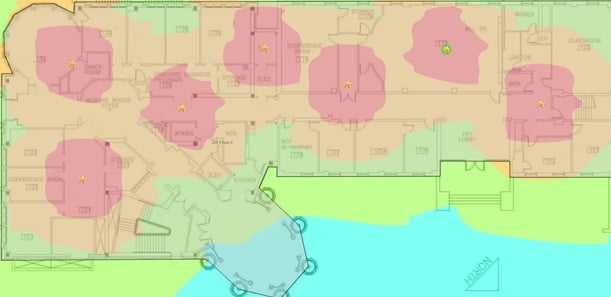Wi-Fi deployments take planning, a lot of planning. If you’re not organized and not prepared for the process that lies ahead not only will it be frustrating but more importantly your new wireless network will more than likely be a huge disaster.
There are several factors to consider before putting it all into play. Some of the things you’ll need to think about are the types of traffic, amount of provided thoughtput, how many clients the network will have to support, number of access points you’ll need and where they’ll be.
Although you don’t have to implement the entire wireless network design at one time, it’s helpful to gather the big picture together and set goals.
Setting Goals
People require more from their Wi-Fi networks than ever before. Demand continues to grow as the necessity to provide real-time streaming, communications and data to numerous types of devices also increases.
That surge in use also makes it essential to determine what goals you need when it comes to coverage and capacity.
Goals are made by creating a model that predicts and calculates how many access points (APs) you’ll need and where to place them in order to support the demands of your users.
Using predictive WiFi designs, WiFi site surveys (on-site), and post-validation site surveys are critical components to assist you in creating and evaluating the accuracy of your wireless network design.
What Does Your Network Really Need
Finding out what your network needs can be done with detailed research and analysis as well as questioning anyone who understands the current Wi-Fi network design.
First, certain factors must be considered when identifying the number and type of APs you want to deploy. Those factors include:
- The types of devices users will be using and their capabilities
- The applications being used
- The maximum number of devices that will be used simultaneously to both transmit and receive on each service set identifier (SSID)
- The users mobility while using the wireless network
- The minimum levels of thoughtput you want to provide
Gathering Information
A common way to gather the information that helps determine your network’s needs is to simply interview people.
Ask both site managers and the people who will be using the network. You can conduct interviews in person or send out questionnaires.
The initial information gathered should include:
- What the estimated number of users will be
- How many devices will actively be on the network at the same time
- What are they being used for or what are your users trying to accomplish
People in leadership roles will often have insight into what those numbers are. They usually have knowledge of the device types and intended use as well as how many may be on the network at any given time.
It’s harder to estimate visitor usage but its still information that can be very beneficial to you and your wireless design. You might want to ask people what they might expect to need in the future, even as far as five years down the line. Is there the expectancy that more or less people will be active on the Wi-Fi network?
Usually this will lead to discussing future business goals which you will need to then convert into technical solutions. Every piece of information can lead to creating the right wireless network design to support your end goals.
Replacing the Existing Wireless Network
Often times, you’re not starting from scratch but rather replacing an existing network. The process typically starts with using the same questions that you would use when designing a brand new WLAN.
However, beyond future estimates and the standard information listed above, you’ll also want statistics and analysis about the network being replaced. There are many wireless network tools that you can use to track activity and performance data on the existing network. You can apply those results and compare them with LAN and WLAN industry standards to get a clearer picture of where your old network stands.
This can help give you a blue-print for where you need to go with your new network, for example, setting bandwidth targets for various users, devices and traffic types.
Different types of assessments are also useful. Assessments such as application performance tests can pinpoint weaknesses within the existing network (in this case from your user’s point of view)—providing you with valuable information you can use to develop your new network.
As a reminder, even though you’re designing for wireless, you can’t overlook the wired network side of things. Everything works together and an outdated wired network can cause serious issues to your brand new wireless infrastructure.
Think of your Wi-Fi deployment planning as a series of questions and gathered information. The answers and knowledge you gain will be the key to setting up a successful wireless network.
At SecurEdge Networks we've helped hundreds of organizations and businesses on their way to secure mobility. If you would like an analysis of your current wireless network or you would like to discuss designing a brand new network, simply contact us here!





